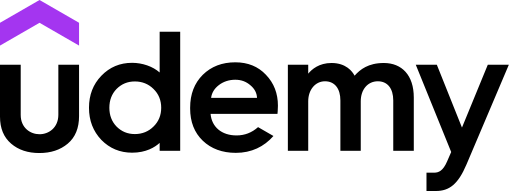5 skills you will need to become a great web programmer
Everything you need for a career in the web development industry

Having the right set of abilities to become an excellent web programmer will improve your chances of being hired and ensure you perform impressively at your job.
A web programmer, rather than a web developer or web designer, focuses more on the code that works behind the scenes, such as in creating interfaces to payment gateways and databases. They are less likely to be choosing the colors of the buttons and more likely to be getting those buttons to work as expected.
The skills web programmers need can vary by company requirements, but several core abilities will stand you in good stead throughout your career. Some can be learned through online resources like Udemy, while others take time and practice to cultivate. Let’s look at the top five skills every web programmer needs.
A Techradar top-rated online learning provider
Udemy is a business oriented video streaming education platform, with over 185,000 videos for professional development. Click here to get started.
1. HTML, CSS, and XML
The bread and butter of web pages, HTML (HyperText Markup Language), and CSS (Cascading Style Sheets) are the markup languages used on all websites. Put simply, HTML code tells the user’s browser what you want to display, such as text and images, while CSS code shows how you intend to display it via layout, colors, and fonts.
HTML and CSS are relatively easy to learn in an online course. Within hours, you should understand how to use HTML and CSS to structure web pages. As a web programmer, you’ll increasingly use other programming languages to dynamically generate HTML and CSS, creating interactive, user-friendly websites and web applications.
Similar to HTML is XML (Extensible Markup Language). This is used to make documents human-readable and machine-readable, and is used in web applications for storing and transmitting data. If you’ve got to grips with HTML, XML is no more difficult to understand and use.
2. JavaScript and JavaScript frameworks
The JavaScript programming language should be part of every web programmer’s toolkit. JavaScript is a client-side script, meaning the code is processed by the user’s browser instead of on a web server. This makes it ideal for simple pieces of code that drive a website’s user interface, such as moving image carousels, checking user input, or displaying a timer.
Are you a pro? Subscribe to our newsletter
Sign up to the TechRadar Pro newsletter to get all the top news, opinion, features and guidance your business needs to succeed!
JavaScript can also make asynchronous calls to the web server. This means you can use it to update parts of a web page without having to reload the page in its entirety. This is a crucial part of modern web user interfaces.
JavaScript frameworks (code libraries) like Node.js, React, and Angular make building complex web-based user interfaces a breeze, as you can insert tried-and-tested user interface elements with just a few lines of JavaScript code.
3. Server-side web programming
The code that runs at the web server end is the meat and potatoes of a web programmer’s job. Server-side code needs to perform many duties, from querying databases and accessing files on a server, to processing user input and structuring dynamic web pages.
There are lots of server-side web programming languages, including PHP, C++, Python, Ruby on Rails, and Java. Most web programming jobs will only require you to have a good grounding in one or two of these languages, as it’s not so common for a web application to use PHP and C++ concurrently, for example.
Server-side web programming requires logical thinking, problem-solving skills, and a healthy dose of patience. Each of these programming languages has a complex set of syntax rules and many code libraries to learn. The best way to get started is by following an online course that takes you through making your first server-side web applications.
4. Databases
Most website applications need to persistently store data. The data may include user account credentials, blog post material, e-commerce product details, sales orders … the list goes on. To perform the storage and retrieval of data, most web apps use a dedicated database application such as Microsoft SQL Server, Oracle, or MySQL.
The maintenance and upkeep of a database is usually the job of a database administrator, so a web programmer isn’t typically expected to know every detail of how databases tick. However, they are required to know how to create a database, perform queries on databases, and make updates to databases through server-side programming.
In most cases, this entails learning the universal language of most popular databases, which is SQL (Structured Query Language). Once you’ve learned the syntax of SQL and how to make use of SQL in your server-side programming language of choice, you’ll be able to make website code that interacts with databases.
5. Web server technology
We often think of the set of software that runs on a web server as the “web stack”. This includes the operating system (e.g., Linux), web server software (e.g., Apache), database (e.g., MySQL), and server-side script interpreter (e.g., PHP).
Understanding how these layers function is essential for web programmers. If you’re responsible for creating a functional web application on Linux, for example, you need to know how to work with the Linux command line to install and update programs, start and restart services, and troubleshoot issues. Or, if your new web application needs a particular library installed in PHP, you must know how to install PHP libraries.
Summary
You have to learn a variety of different skills to become a great web programmer. You are expected to understand front-end tech such as HTML, CSS, and JavaScript, and back-end tech such as server-side languages and databases.
You can learn these skills with online classes and courses using the best web development tools on your home computer. Web programming is a fun and challenging job, and it’s never been more accessible, as well as easier on your wallet, to get into the profession.
Richard brings over 20 years of website development, SEO, and marketing to the table. A graduate in Computer Science, Richard has lectured in Java programming and has built software for companies including Samsung and ASDA. Now, he writes for TechRadar, Tom's Guide, PC Gamer, and Creative Bloq.


